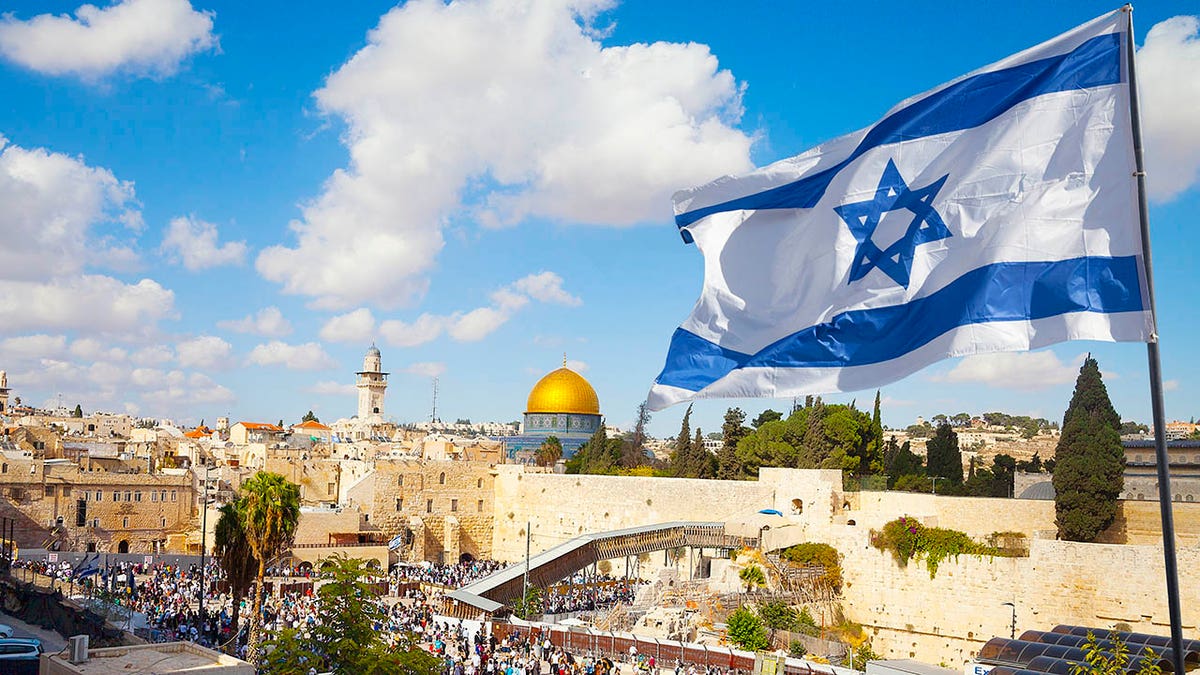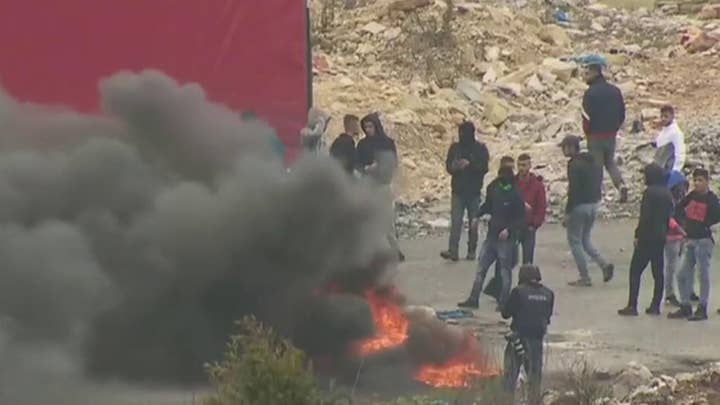Trump says his administration's Middle East peace plan is fundamentally different from past proposals
President Trump holds joint news conference with Israeli Prime Minister Netanyahu to announce new Mideast peace plan.
President Trump and Israeli Prime Minister Benjamin Netanyahu revealed a long-awaited Middle East peace plan meant to bring to an end the decades-long conflict between Israel and the Palestinians.
The plan, which has been opposed by the Palestinians, was touted by Trump as the “most detailed proposal ever put forward” toward a lasting peace in the region.
TRUMP UNVEILS MAP OF PROPOSED STATE OF PALESTINE
“Complex problems require nuanced remedies,” Trump said. “My vision presents a win-win opportunity for both sides.”
Here is a look at some of the key features of the Middle East Peace plan:
Two-State Solution:
Long-billed as the only way for the Palestinians and Israelis to actually come to terms, Trump’s plan calls for a two-state solution – with the creation of a future “state” of Palestine.
The plan would require the Palestinians to meet certain benchmarks -- rooting out terrorism, stopping "pay to slay," implementing steps toward free speech and political reforms – to become a state, but Trump promised that they would have U.S. backing if they did. It also calls for the creation of a Palestinian capital in East Jerusalem and for more than doubling the amount of territory the Palestinians control.
Land Swaps
There will also be a number of land swaps including one south of the Gaza strip to give the Palestinians more territory and one near the Egyptian border that will remain Israeli territory and will be subject to Israeli security control. The plans also calls for the construction of a tunnel connecting the West Bank and Gaza strip.
Israel will also maintain sovereignty of the Jordan Valley east of the West Bank.
Security
A major part of the plan focuses on cutting down terror attacks on Israeli settlements – and Israeli reprisals on the Palestinians – by calling for a demilitarized Palestinian state. In a suggestion sure to ruffle feathers among the Palestinian leadership, the plan also gives Israel power to maintain overall security in the region, though it does create programs for the Palestinians to show the capability to secure their areas with local police forces.
Settlements
The plan calls for Israel to halt the construction of any new settlements in contested areas for four years during which time details of a comprehensive agreement would be negotiated. It is not immediately clear, however, if the freeze could be extended if a final deal is not concluded in the four years.
The deal would also require the Palestinians to accept conditions they have been previously unwilling to consider, such as accepting West Bank settlements.
In the run-up to the March 2 election, Netanyahu has called for annexing parts of the West Bank and imposing Israeli sovereignty on all its settlements there. Israel captured the West Bank in the 1967 Mideast war, and the Jordan Valley in particular is considered a vital security asset.

Jerusalem
Continuing the Trump administration stance, the plan recognizes Israeli sovereignty over the city of Jerusalem – although it does set up a Palestinian capital in East Jerusalem.
The Palestinians see the West Bank as the heartland of a future independent state and east Jerusalem as their capital. Most of the international community supports their position, but Trump has reversed decades of U.S. foreign policy by siding more blatantly with Israel. The centerpiece of his strategy was recognizing Jerusalem as Israel’s capital and moving the American embassy there.
U.S.-Palestinian Relations
While Washington’s relations with the Palestinians have been frosty under Trump, the new plan calls for greater working relations between the two should the Palestinians meet the proposal’s criteria.
During his remarks in the White House on Tuesday, Trump dangled the idea of the Palestinian statehood and a capital in East Jerusalem should the Palestinians agree to the plan, and even said he would set-up a U.S. embassy in East Jerusalem.
Fox News’ John Roberts contributed to this report.



























